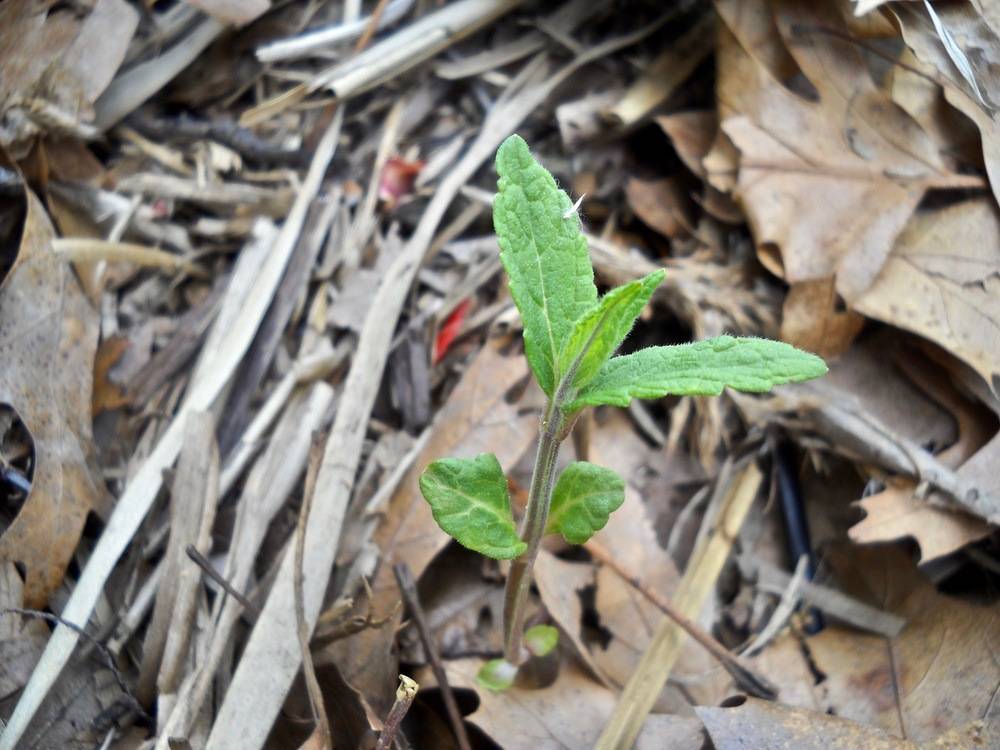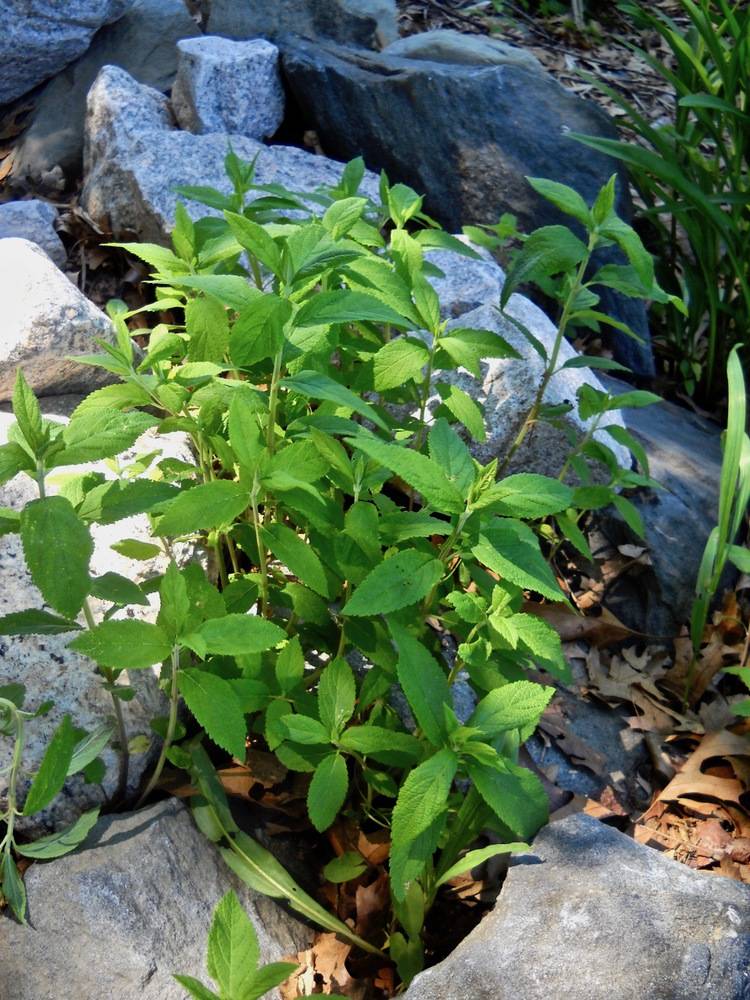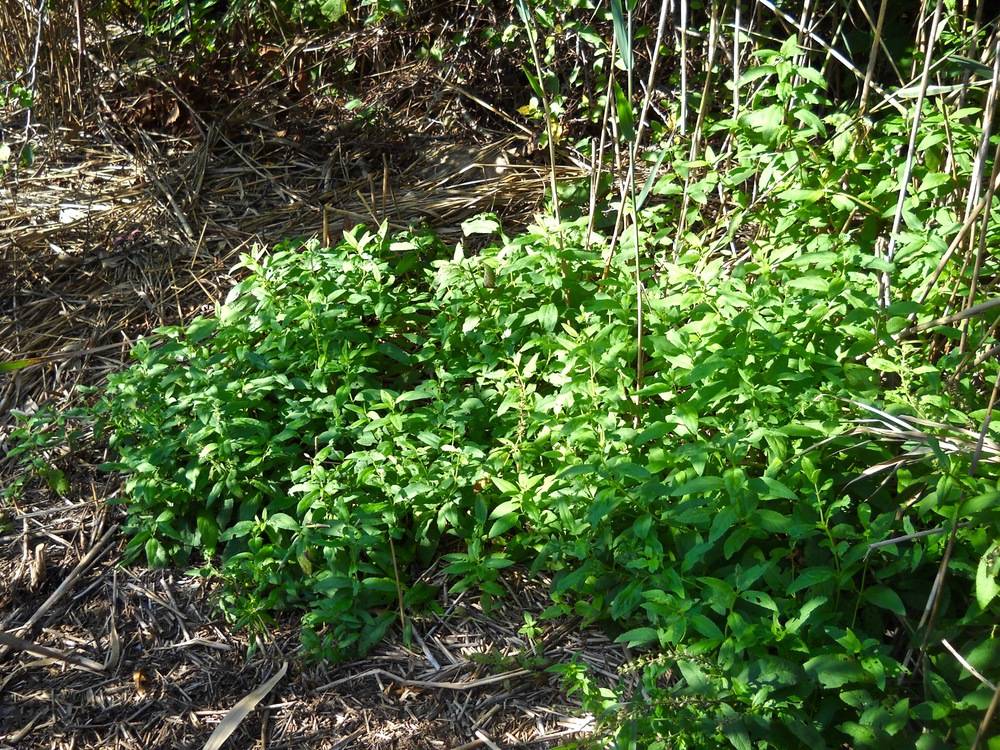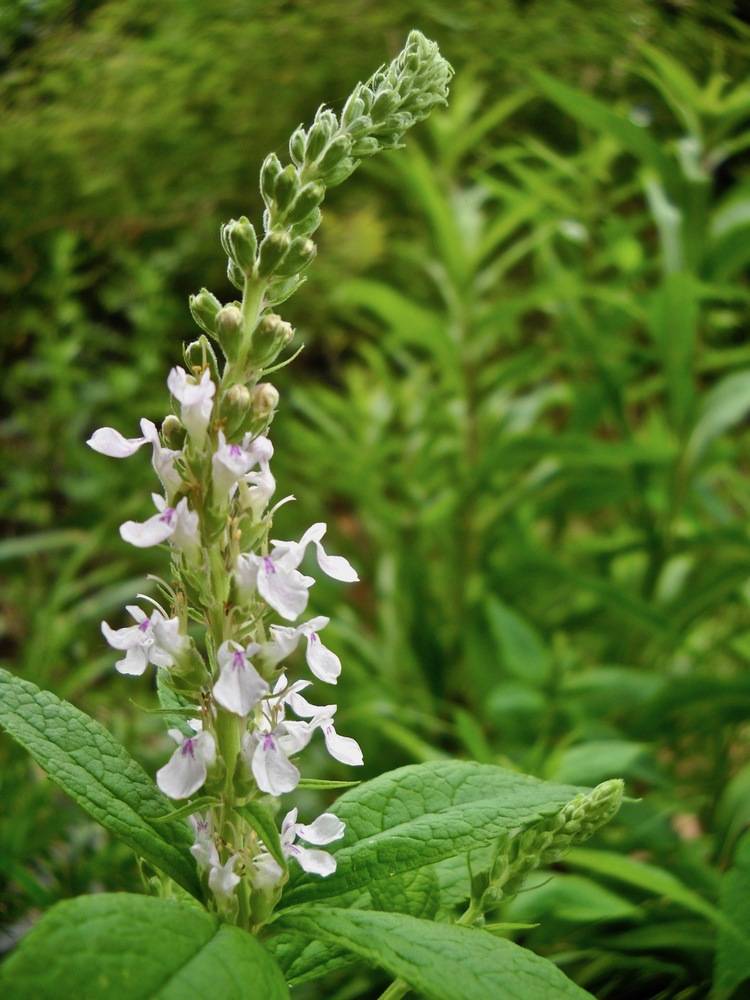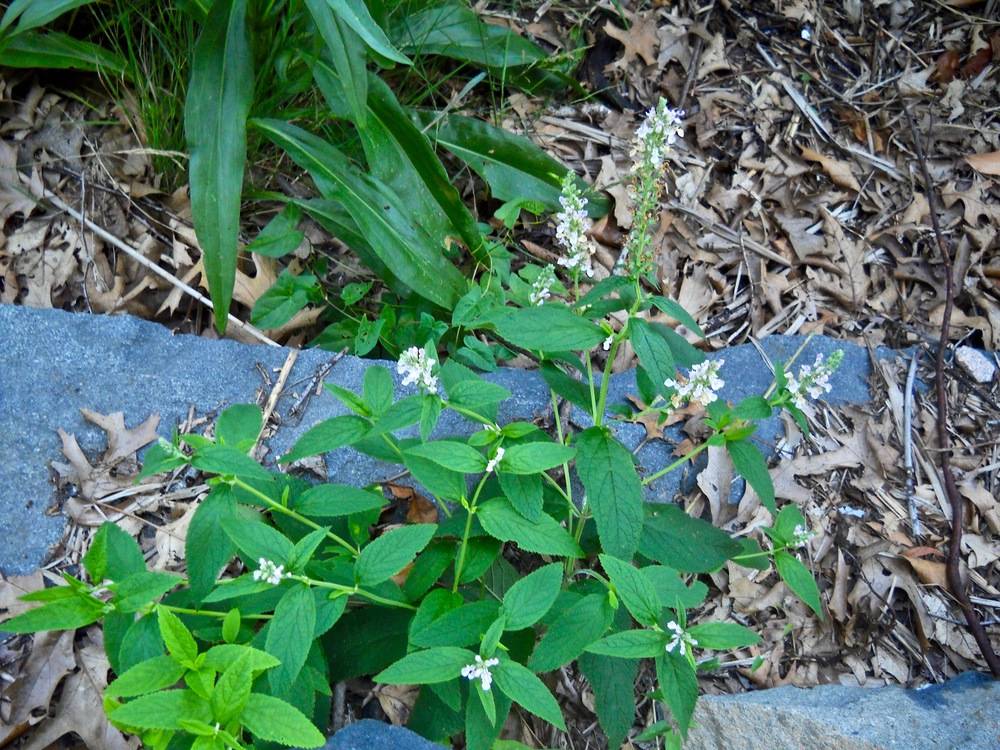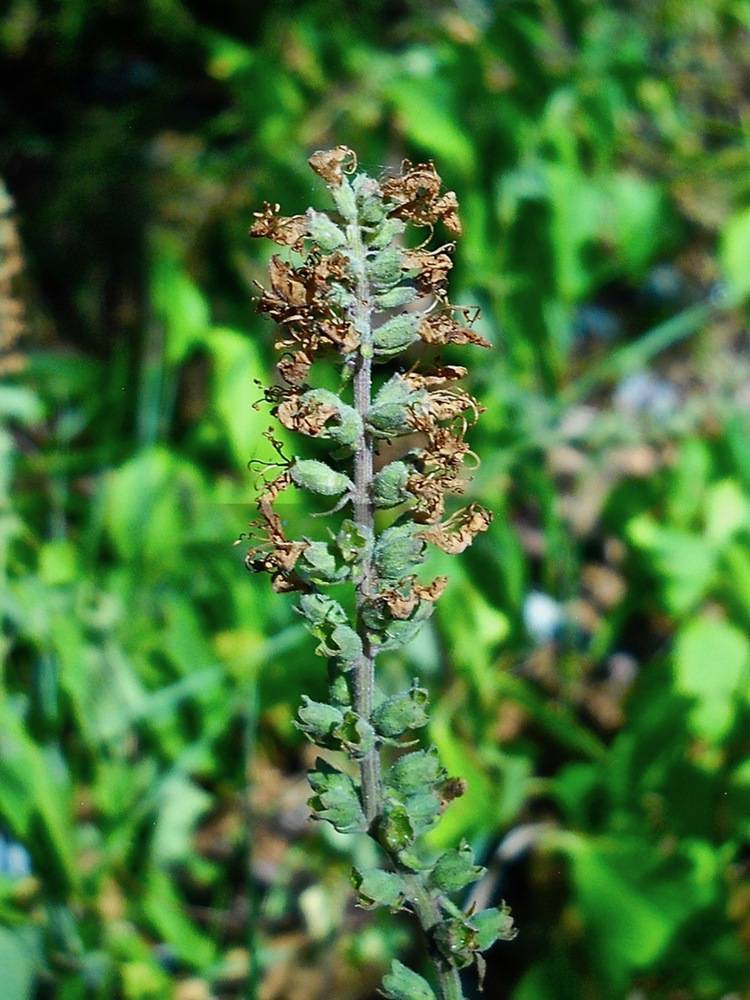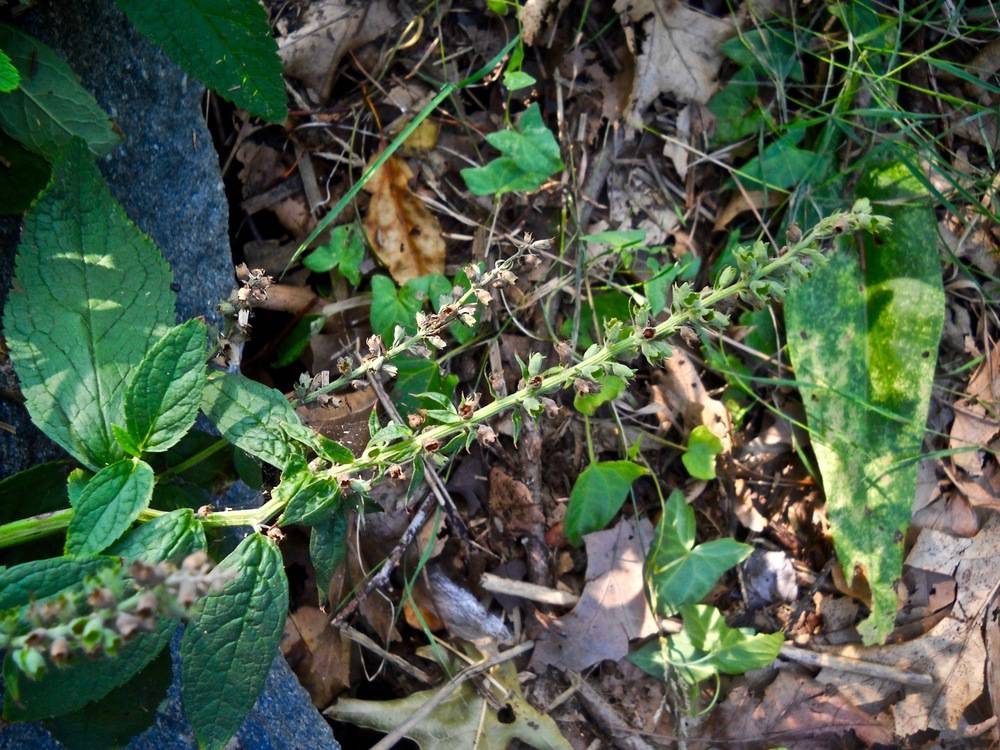American germander
American germander is a member of the mint family which includes familiar herbs like basil, marjoram, oregano, peppermint, sage, and thyme. It is a perennial forb native to North America and most often grows in moist or poorly-drained soil along rivers, marshes, forest edges, roadside ditches or grasslands.
At Salter Grove, small patches of it are found near the boat launch and along the causeway where the soil is subject to occasional tidal inundation. A large, well-established patch is located near trail marker M9 in the company of other salt marsh dwelling plants.
Like many other members of the mint family, it has a hollow erect stem that is squarish. In favorable habitats, it can establish itself quickly by sending out new stems from a dense mass of rhizomes, and thus is considered invasive in some areas. Because of its low-lying growth form, American germander is usually not very noticeable until its flower spikes appear. The flowers open successively from the base of the spike upwards, over the period of a month. For insect visitors such as bumblebees the large lower lip of the flower is a convenient landing platform.
Native Americans made a tea with its leaves to promote urination and sweating. The stems and leaves were crushed and used to dress wounds and heal sores and ulcers.

